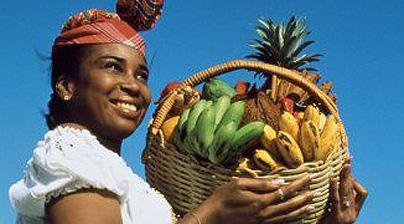Community news. Fighting against such tyranny was Louis Delgrés, head of the district of Basse-Terre. Born in Martinique, of African and European parentage, Delgrés rose to the rank of colonel in the French army before he deserted to organize a resistance movement against the restoration of slavery.
Delgrés and his commanders, Joseph Ignace and Palerme, led smaller fractions of the resistance army in a bid to maximize their chances of success against the French.
However, after heavy fighting that left many casualties and Delgrés wounded, he and the resistance fighters barricaded themselves in a fort that was later besieged by Richepance.
When offered a pardon, Delgrés refused and a few days later, realizing that defeat was eminent, left the wounded at the fort and went to Matouba, taking with him three hundred men and some women who were active in the resistance movement. At Matouba, Delgrés and Ingace along with men women and children blew themselves up rather than be enslaved, thus fulfilling their oath “Live free or Die!”
One of the people who fought on the side of Delgrés, was a woman called Solitude. Although pregnant, she fought tirelessly against French enslavement. She was wounded when the others blew themselves up at Matouba, and was captured. While those who survived the explosion were quickly hanged, Solitude received a temporary pardon because she was pregnant. Six months, later on 29 November 1802 (the day after giving birth to a son), she was executed.
In the months leading up to the birth of her child, she suffered great emotional stress that also affected her physically and mentally. Knowing that she was kept alive only for her child to be enslaved would have been mental torture. The day she stepped onto the scaffold, she was unrecognizable to those who knew the beautiful young woman. Her hair had greyed prematurely and she looked like an old woman.
Solitude, the child of a French sailor and a Mende woman from Sierra Leone, was the result of her mother’s rape on board a slave ship to Guadeloupe. She was born in 1772.
When she was eight years old, her mother disappeared. There are several possibilities surrounding her mother’s disappearance. She could have died from malnutrition and hard work (as was the case with most enslaved people), or she was sold to another plantation, or she simply abandoned her daughter and ran away.
With the first abolition of slavery in Guadeloupe, twenty-two year old Solitude joined a community of maroons in Guava, Bassa-Terre. After its restoration eight years later, she joined the resistance movement, headed by Delgrés and others.
Enslaved women were instrumental in the resistance of the brutal and forced exploitation of their labour. While uprisings were the most dramatic forms of resistance in which they took up arms, women practiced more subtle and subversive methods of aggression towards their enslavers that on a daily basis, was more effective in resisting the system of slavery.
Upon realizing they were pregnant, many enslaved women preferred to abort their pregnancies and were able to do this with medicinal knowledge they or others possessed for the uses of plants. Others who went to full term would kill their newborn infants rather than bring a child into the system of slavery. Another method of resistance was refusing to wean a child for years as lactating mothers usually produced hormones that reduced fertility.
Some resisted enslavement by committing acts of sabotage, damaging machinery, and crops, committing arson or feigning illness. Others pretended to be mentally deficient so as not to understand but the simplest work related instructions.
Poisoning livestock, contaminating food by spitting in it, under-cooking it or adding too much salt were methods of resistance and many plantation owners were anxious about eating their meals in case it was poisoned.
Other forms of resistance came in the form of teaching African culture and traditions. This retention is present in African words and names in the Creole and Creolese languages of different Caribbean islands, in the folklore, in foods, in the use of plants for medicinal purposes and in spiritual and cultural beliefs.
Women ran away to be with family members or to plantations where they thought they would be treated better. They also ran away and became maroons, living in the hills or dense forest areas.
Enslaved women also killed themselves as the ultimate act of resistance.
In 1999, the Guadeloupe government erected a statue in honour of Solitude on the Boulevard of Heroes Abymes, and in 2007, the French erected another one in Hauts-de-Seine, France.





